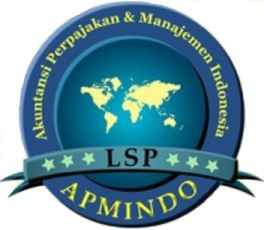Faktor Rasio Keuangan terhadap Sustainability Perbankan di Indonesia: Menggunakan Regresi Logistik
Abstract
This study aims to look at the variables that affect financial sustainability. The data used are banking financial statement data contained in the FSS in 2013 to 2017. The value used to measure financial sustainability is FSS. The value of FSS as the dependent variable is divided into two categories, namely banks that are sustainable and banks that are not sustainable. Response variables used are financial ratios consisting of ROA, ROE, CTD, LTD, DTA, and CTA. The analysis used is logistic regression. Based on the results of the logistic regression model that is formed, a significant variable influences sustainability is ROA and LTA. The odds ratio values for the ROA and ROE variables are 1.2 and 2.2. This means that there is an increasing trend of 1.2 and 2.2 times for better financial sustainability with each added value of ROA and ROE. In other words, the greater the value of ROA or ROE, the greater the possibility of banking for financial sustainability. Chi-square test shows the p-value of 0.27 is greater than alpha. This shows the model meets the goodness of fit.
Keywords: Financial Sustainability, Financial Ratio, Logistic Regression, Odds Ratio
References
Asnawi, N., dan Masyhuri. 2011. Metodologi Riset Manajemen Pemasaran. Malang: UIN Maliki Press.
Ayyubi, S. E., Anggraeni , L., dan Mahiswari, A. D. 2017. Pengaruh Bank Syariah terhadap Pertumbuhan Ekonomi di Indonesia . Jurnal Al-Muzara’ah, 88-106.
Bank Indonesia. 1998. Undang-Undang No.10 Tahun 1998 Tentang Perubahan Terhadap Undang-Undang No.7 Tahun 1992. Jakarta.
Bourkhis , K., dan Nabi, M. S. 2013. Islamic and conventional banks' soundness during the 2007–2008 financial crisis. Review Financial Economics, 68-77.
Chong, B. S., dan Liu, M.-H. 2009. Islamic banking: Interest-free or interest-based? Pacific-Basin Finance Journal, 125-144.
Hamdi, A. S., dan Bahruddin, E. 2014. Metode Penelitian Kuantitatif Aplikasi Dalam Pendidikan. Yogyakarta: Deepublish.
Hasan, M. M., dan Dridi, J. 2011. The Effects of the Global Crisis on Islamic and Conventional Banks: A Comparative Study. . IMF Working Paper 10/201.
Hosmer, D. W., dan Lemeshow, S. 2000. Applied Logistic Regression (Second Edition). New York: John. Wiley dan Sond, INC.Juanda, B (2009). EKONOMETRIKA: Pemodelan dan Pendugaan. IPB Press
Ifham, A. 2015. Ini Lho Bank Syariah; Memahami Bank Syariah dengan Mudah. Jakartaa: PT Gramedia Pustaka Utama.
Ismail. 2016. Perbankan Syariah. Jakarta: PRENADAMEDIA GROUP.
Johnes, J., Izzeldin, M., dan Pappas, V. 2014. A comparison of performance of Islamic and conventional banks 2004–2009. Journal of Economic Behavior dan Organization, 93-107.
Khan, F. 2010. How ‘Islamic’ is Islamic Banking? Journal of Economic Behavior dan Organization, 805-820.
Marwa, N., dan Aziakpono, M. (2015). Financial sustainability of Tanzanian saving and credit cooperatives. International Journal of Social Economics, 42(10), 870–887.
Rafsanjani, H., dan Sukmana, R. 2014. Pengaruh Perbankan Atas Pertumbuhan Ekonomi: Studi Kasus Bank Konvensional dan Bank Syariah di Indonesia. Jurnal Aplikas Manajemen, 492-502.
Saragih, A. F. 2013. Analisis Perbandingan Kinerja Keuangan Antara Bank Syariah. Jurnal Akuntansiku, 1-15.
Sho'imah, L., Darminto, dan Nuzula, N. F. 2015. Analisis Rasio Keuangan Perbankan Sebagai Alat Untuk Mengevaluasi Kinerja Keuangan Bank (studi pada PT Bank Tabungan Negara ). Jurnal Administrasi Bisnis, 1-10.
Susanthi, Ari. 2010. Pengaruh Loan to Deposit ratio, Capital Adequacy Ratio, dan Leverage Management terhadap Profitabilitas pada PT Bank Pembangunan Daerah Bali Kantor Pusat Denpasar. Jurusan Manajemen Fakultas Ekonomi Universitas Udayana, Denpasar
Sylvanus Ikhide. 2017. Financing and financial Sustainability: Evidence from selected southern Africa development community microfinance institutions.
Thayib, B., Murni, S., dan Maramais, J. 2017. Analisis PErbandingan Kinerja Keuangan Bank Syariah dan Bank Konvensional. JURNAL EMBA: JURNAL RISET EKONOMI, MANAJEMEN, BISNIS DAN AKUNTANSI, 1759-1768.
Usanti, T. P., dan Shomad, A. 2016. Hukum Perbankan. Jakarta: KENCANA.
Vivin, Y. A., dan Wahono, B. 2017. ANALISIS PERBANDINGAN KINERJA KEUANGAN BANK UMUM. e – Jurnal Riset Manajemen-unisma, 15-28.





